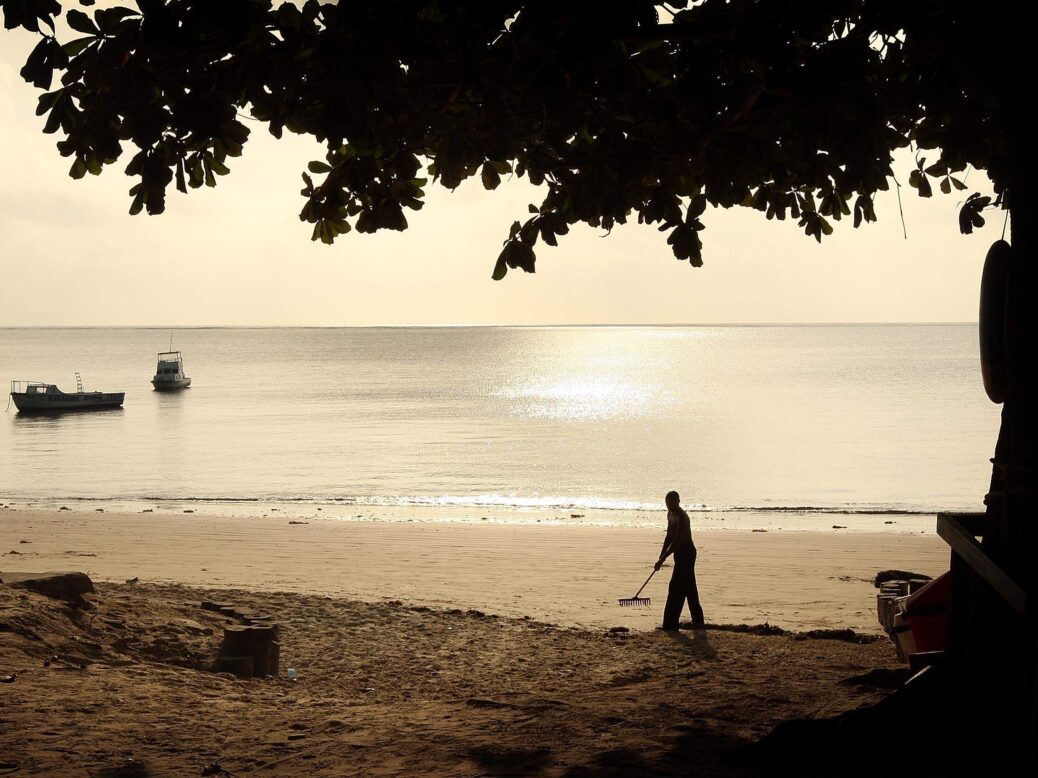
The beach was deserted. Not just typical low season – slightly quiet, as you’d expect – but truly not another soul in sight. White sand, strewn with seaweed, stretched as far as the eye could see. It was an instant, brutally visible, result of international terror alerts.
On 16 May, the British Foreign Office warned that there was a “high threat” of terrorist attacks on the Kenyan coast. Tour operators First Choice and Thomson Direct cancelled flights and evacuated 400 British tourists. The decision to evacuate was mainly due to insurance concerns but it was high profile and understandably caused panic among other holiday-goers. The US, Australia, and France also issued travel warnings about Kenya’s coast, particularly the area surrounding the coastal city of Mombasa. The hundreds of cancellations stretch all the way to October.
A week after the alerts were issued, I was in Watamu, a small tourist village not in the area covered by these terror warnings. Booking the trip from Nairobi, my friends and I scoured the Foreign Office’s online map for the parts of coast not covered in the red that indicates that you should “avoid all but essential travel”. To reach many coastal resorts, you must fly to Mombasa – the centre of the high alert zone – but Watamu is accessible via the tiny airport in Malindi. Yet still, the restaurants were empty, bar one or two other people. Hordes of taxi drivers aimlessly drove up and down the streets, with no one to collect.
The fact that not everywhere on the coastline is considered a high risk has not helped tourism. Flying from Nairobi to Malindi, I flicked through a local newspaper. It said that 7,000 people had been laid off from seasonal tourist work in the single week that had passed since the evacuations. One evening, walking back to our villa along a silent, pitch-black street, a car slowed down next to us. “I just wanted to make sure you’re alright,” a man shouted from inside. “Can I drop you somewhere? You don’t have to pay.” In Watamu, those who had kept their jobs were anxious to make sure we – practically the sole tourists in the town – were not wanting for anything.
A week after I left Kenya, two days of violence in the coastal village of Mpeketoni and the surrounding area, close to the Somali border, left 60 people dead. Militants armed with guns and explosives slaughtered 48 people on the first day alone. Despite its proximity to the popular luxury holiday destination of Lamu island, Mpeketoni was not a tourist town but a local village. The intelligence services were right to expect something; but it was not a hit against western interests.
Responsibility for the attack has been claimed by the Somali Islamist group, al-Shabab. The group is battling the government in neighbouring Somalia, and has been responsible for a series of terror attacks in Kenya over the last few years. The most high profile of these was the assault on the Westgate shopping mall in Nairobi in September 2013. The siege lasted four days and left 67 people dead. Since then, there have been frequent bomb blasts in Kenya’s major cities. Al-Shabab, which still controls sections of Somalia despite being pushed out of the major cities, says that this terror campaign will not end until Kenya withdraws its troops from the country.
The aim is not just to create terror and a loss of life, but to damage the country’s economy. Attacking the tourist industry, which makes up around 12 per cent of the economy – second only to agriculture – is one way of doing that.
The Channel 4 reporter Jamal Osman recently described a conversation he had with an al-Shabab commander in 2010:
To explain al-Shabaab’s long-term strategy, the commander used an animal analogy. “Do you watch animal programmes on television?” he asked me. I nodded.
“You sometimes see a lion bringing down an elephant and killing it. That proves size doesn’t always determine the winner.
“We are not as big as our enemies, but with the right tactics we can win the war. We need to choose the weakest one, isolate, confuse and just follow what lions do.”
The commander said their aim was to destroy Kenya’s tourism sector – and hoped it would have a knock-on effect.
There will be less money to pay soldiers and buy weapons to fight us. Unemployment will rise. There will be crisis. Eventually the elephant will get tired and give up the fight.”
Somewhat ironically given the current state of affairs, Kenya’s military incursion into Somalia was partly triggered by al-Shabab’s effect on its tourist industry – when it kidnapped a British tourist from Lamu in 2011. Many now are asking why the state could successfully fight terrorism in Somalia but appears unable to do so within its own borders. Weak security intelligence, endemic corruption among police and all levels of government, and poor anti-terror policies (which have so far focused on indiscriminately rounding up members of Kenya’s large Somali community), all have a part to play.
Ministers have made a series of statements aimed at reassuring tourists that they are taking action. But with Kenya swiftly losing its status as a safe haven in the region, al-Shabab’s strategy seems to be starting to take effect.





